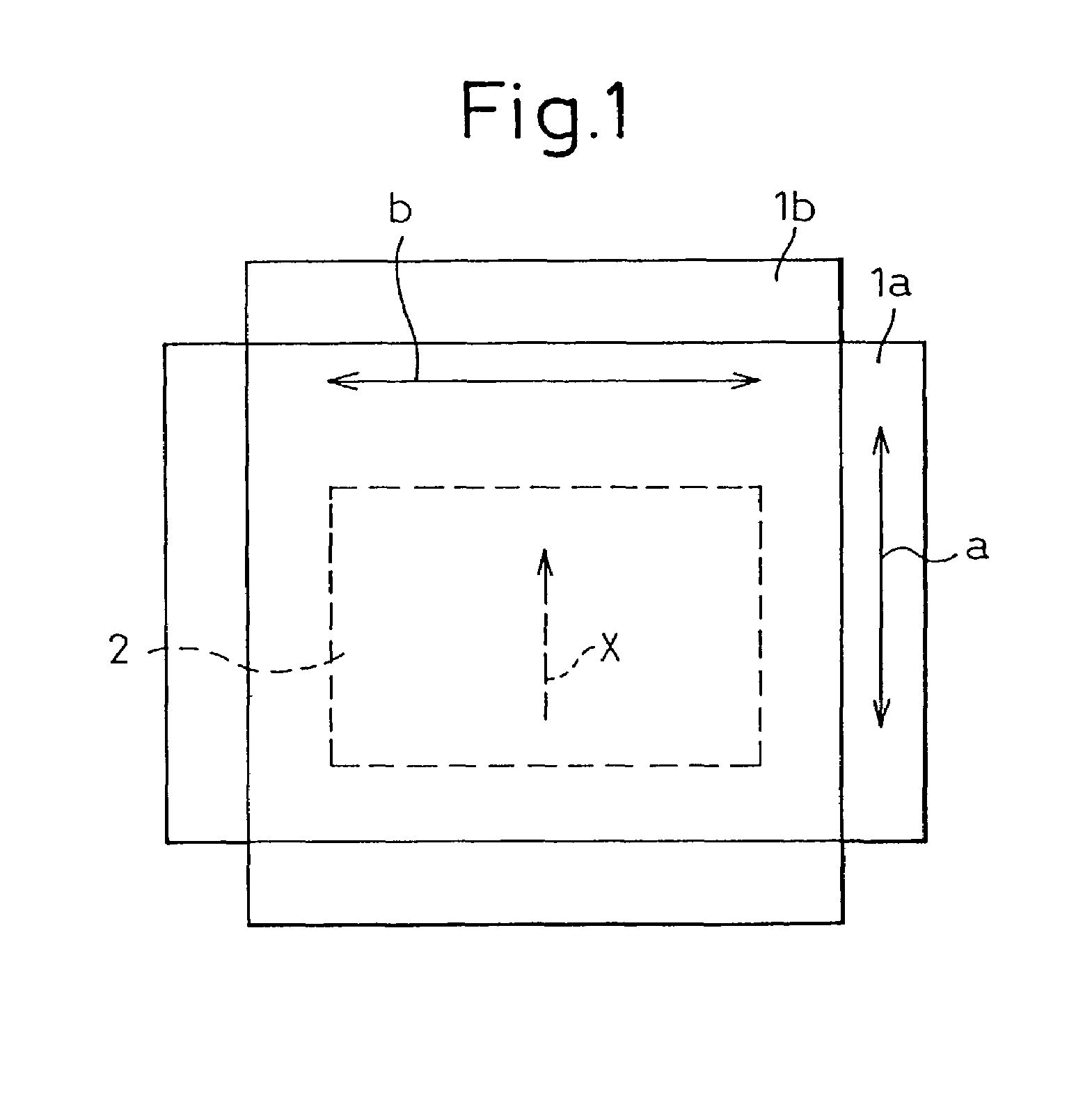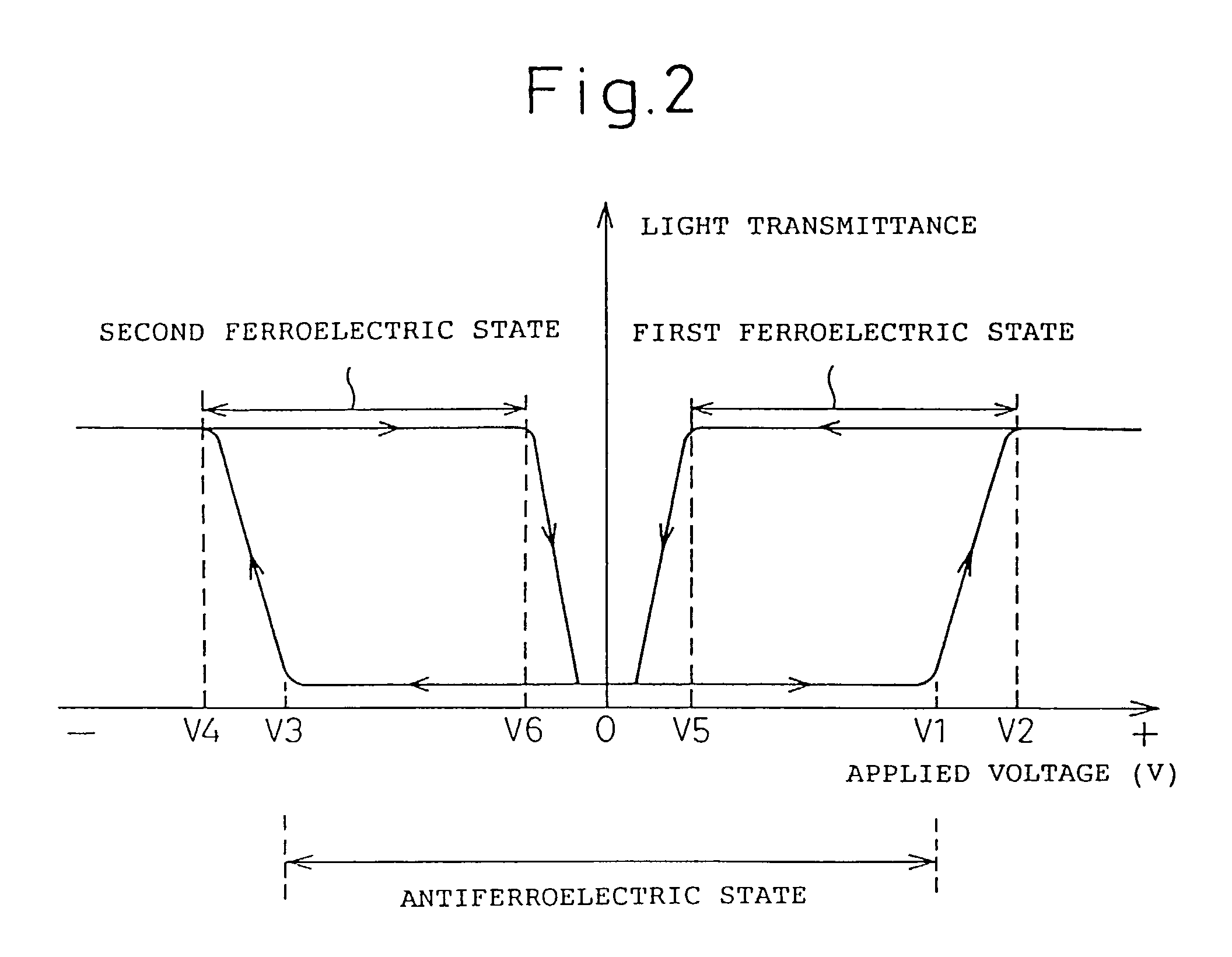Liquid crystal display and method of driving the same
a technology of liquid crystal display and display method, which is applied in the direction of non-linear optics, static indicating devices, instruments, etc., can solve the problems of color control, inability to display the desired color, and inability to display the entire screen with uniform brightness, etc., and achieve uniform display and accurate control
- Summary
- Abstract
- Description
- Claims
- Application Information
AI Technical Summary
Benefits of technology
Problems solved by technology
Method used
Image
Examples
embodiment 1
[Embodiment 1]
[0036]Embodiments of the present invention will be described in detail below with reference to drawings. FIG. 7 is a diagram showing the structure of a liquid crystal panel used in the embodiments of the present invention. The liquid crystal panel used in the embodiments comprises: a pair of glass substrates 11a and 11b between which an antiferroelectric liquid crystal layer 10 with a thickness of about 2 μm is sandwiched; and sealing members 12a and 12b for bonding the two glass substrates together. On the opposing surfaces of the glass substrates 11a and 11b are formed electrodes 13a and 13b, which are coated with polymeric alignment films 14a and 14b, respectively, that are processed by rubbing. On the outside surface of one glass substrate is disposed a first polarizer 15a with its polarization axis oriented parallel to the rubbing axis, while on the outside surface of the other glass substrate, a second polarizer 15b is arranged with its polarization axis oriented...
embodiment 2
[Embodiment 2]
[0045]In the first embodiment, driving waveforms different from the liquid crystal driving waveforms shown in FIG. 4 were used. However, the prior art problem can also be solved by using the liquid crystal driving waveforms shown in FIG. 4 that were used in the prior art.
[0046]FIG. 12 is a diagram showing the driving waveforms for two frames in FIG. 4. These driving waveforms are identical to the traditionally used waveforms, and the waveforms are the same for the first frame (F1) as for the second frame (F2), except that the polarity is reversed. In the figure, (a) is the voltage waveform applied to the scanning electrode (Xn), (b) is the voltage waveform applied to the signal electrode (Ym), and (c) is the composite voltage waveform applied to the pixel. The light transmittance of the liquid crystal varies with the voltage waveform applied to the pixel. The driving waveforms shown here are applicable when driving the screen in white display mode.
[0047]In the second e...
embodiment 3
[Embodiment 3]
[0051]In the second embodiment, the driving voltage waveforms for a plurality of frames were applied during the period TS that one particular color was being emitted. However, the prior art problem can also be solved in another way by using the same driving waveforms as those shown in FIG. 12.
[0052]FIG. 14 is a diagram illustrating a third embodiment of the present invention. FIG. 14 shows the scanning electrode driving voltage (a) for each frame and the color (R, G, or B) being emitted during the corresponding frame period. The waveform (b) applied to the signal electrode, the composite voltage waveform (c), and the transmittance waveform (d) shown in FIG. 12 are not shown here, but the same waveforms are also used here. In the third embodiment, each frame period is made substantially equal to the period TS during which light of one color is emitted, and R, G, and B are emitted in sequence in corresponding relationship with the frames F1, F2, and F3, respectively. Whe...
PUM
 Login to View More
Login to View More Abstract
Description
Claims
Application Information
 Login to View More
Login to View More - Generate Ideas
- Intellectual Property
- Life Sciences
- Materials
- Tech Scout
- Unparalleled Data Quality
- Higher Quality Content
- 60% Fewer Hallucinations
Browse by: Latest US Patents, China's latest patents, Technical Efficacy Thesaurus, Application Domain, Technology Topic, Popular Technical Reports.
© 2025 PatSnap. All rights reserved.Legal|Privacy policy|Modern Slavery Act Transparency Statement|Sitemap|About US| Contact US: help@patsnap.com



